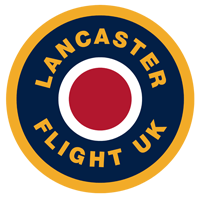Flying The Lancaster
Before the flight you will be briefed as to what is going to happen according to the flight you have chosen.
The aircraft has been accurately built as a wartime Lancaster Bomber so most of the controls you touch and use are from WW11. They all work in the correct sense and all gauges operate and give you accurate real time response.
Your Flight instructor will explain how everything works, its not complicated and most of the people who fly the Lancaster are not pilots.
The scenery is projected onto a semicircular screen, giving you all round vision and total immersion, both in day and night flights.
The brakes are released, the throttles pushed forward, and with the help of the instructor you take off along the runway. You climb out from the airfield, raise the landing gear and alter the propellor pitch and settle into a sedate cruise. Fly the route chosen and return to the airfield. Set up an approach and lower the flaps and look to make a sedate landing.
With ½ hour and 1 hour daylight flights we usually fly from Hurn, around the Isle of Wight, then over to Portland, then decend and fly the bombing run along the Fleet behind Chesil beach before returning back to the airfield and landing.
For the night flights, we usually take off at dusk with the light gradually fading until we return in total darkness and make a night landing. It’s very atmospheric with late sunset and the challenge of a night landing.
Remember, although some of the above may appear a bit challenging, you have a Flight Instructor with you at all times to advise and help with the controls if required.
At the end of the flight, day or night, you will land the aircraft back at the airfield. If it’s a good landing, take all the praise, if not so good, blame the Flight Instructor !
